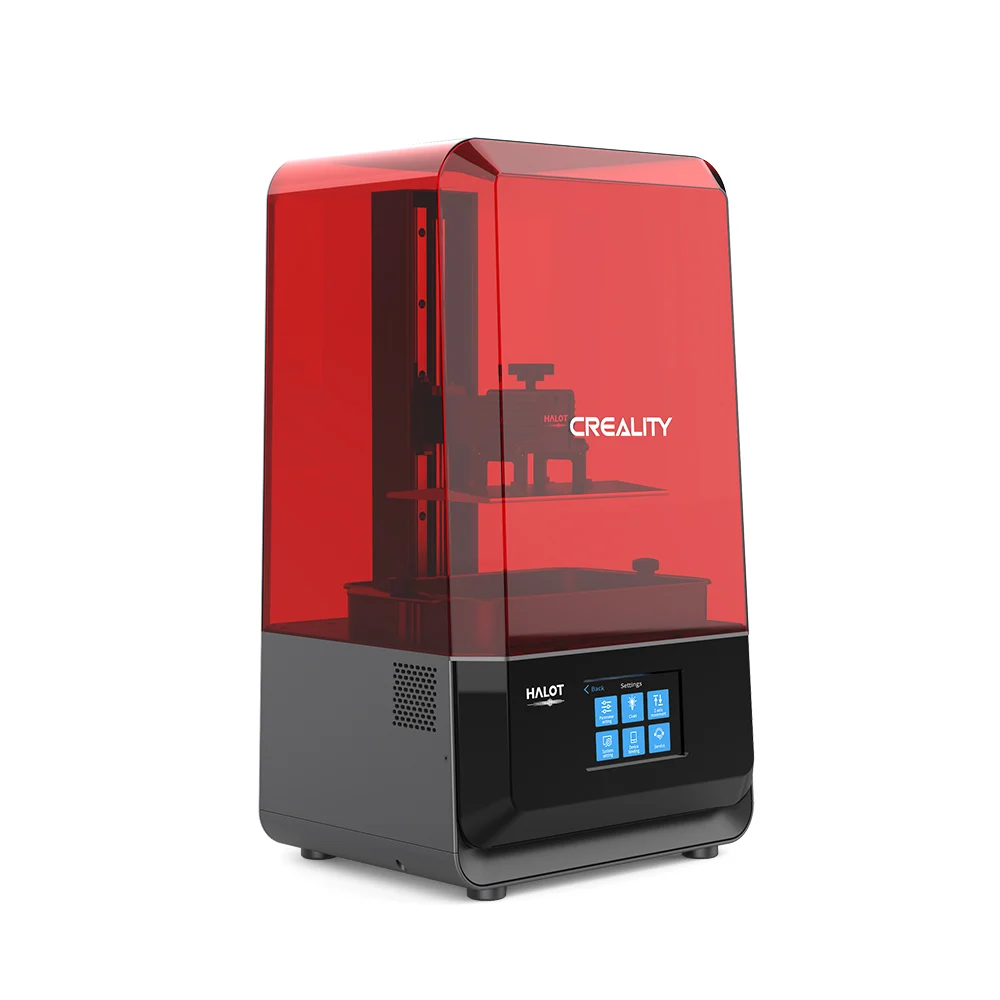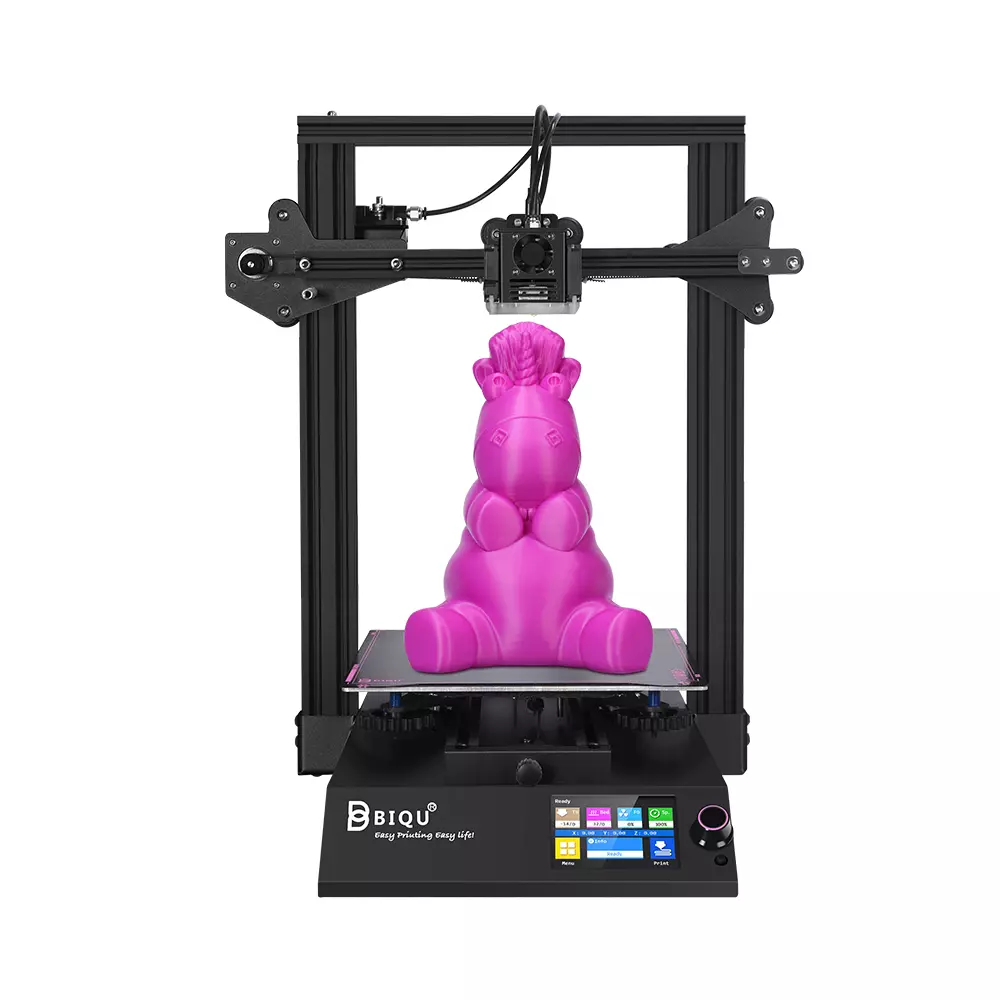Compare Halot Lite vs BIQU B1
Comparison between the best 3D printers
Choose the best 3D printer at the best price. The cheapest 3D printers are here.
Buy a 3D printer here with 3D Fila.
 |
 |
|
| Model | Halot Lite |
BIQU B1 |
| Printing Material | Resin | Filament |
| Buy Resin for Creality 3D Halot Lite | Buy Filament forBigTreeTech BIQU B1 | |
| Estimated price | $400,00 | $269,00 |
| Manufacturer | Creality 3D | BigTreeTech |
| Release Year | 2021 | 2020 |
| Print Volume [mm] | 192x120x200 | 235x235x270 |
| Printer Size [mm] | 330x301x572 | 412x402x492 |
| Weight [kg] | 10,6 | 8,00 |
| Power Loss Recovery | NO | YES |
| Maximum Resolution [mm] | 0,01 | 0,1 |
| Processor | 32 Bits BTT SKR V 1.4 | |
| Display | Display touchscreen 5'' | Touchscreen TFT 3,5'' |
| Power Supply | 24V / 360W | |
| Connectivity | SD / USB | SD / USB |
| Operating systems | Windows, Mac, Linux | Windows, Mac, Linux |
| Date of registration in the system | 2022-11-04 | 2021-04-14 |
| Release date | 2021 | 2020 |
| Extra features | Crealitys Halot Lite printer stands out in the mid-size resin 3D printing segment, with a build volume of 192 x 120 x 200 mm and 50 micron resolution. It offers a monochrome LCD for fast and durable printing, and an upgraded light source that ensures over 80% uniformity across the print bed. It includes Wi-Fi connectivity for remote control and updates, an ARM Cortex CPU for efficient performance, and is compatible with Halot Box and Lychee slicing software. It also has an activated carbon filter to reduce odors. | The BIQU B1 is an advanced 3D printer with a silent 32-bit BTT SKR V1.4 motherboard and ARM Cortex-M3 CPU, offering DIY interfaces (I2C, SPI, WiFi) and dual Z-axis. Its dual BTT B1 TFT35 V3.0 operating system allows real-time monitoring and multiple printing modes, including G-code visualization effects. It stands out for its BIQU SSS (Super Spring Steel), ensuring easy model adhesion and simplified removal, with the possibility of using it on both sides. It includes a filament sensor, automatically pausing printing in case of filament breakage. The multicolored RGB lights integrated into the hotend allow you to view the printing status even at night. Additional notes include the need for a BIQU-specific Type-C cable and extra interfaces for smart filament sensor and BL Touch. |
| Support for multiple colors and materials (AMS and CFS) | NO | NO |
Notes * |
||
| Cost-benefit | 8 / 10 | 7 / 10 |
| Hardware | 1.2 / 10 | 2 / 10 |
| Tela | . | . |
| Print volume | 3 / 10 | 3 / 10 |
| Performance | 9 / 10 | 1 / 10 |
Conclusion |
| In concluding the comparison between the Creality 3D Halot Lite and the BIQU B1, it's essential to weigh the strengths and weaknesses of both models in terms of their specifications, performance, and overall value. The Creality 3D Halot Lite excels in print quality, offering a maximum resolution of 0.01 mm. This high-resolution capability, coupled with features like a monochrome LCD and an upgraded light source for improved uniformity, positions it as an excellent choice for those focused on producing highly detailed prints. However, its print volume is smaller compared to the BIQU B1, which means users may face limitations for larger projects. The absence of power loss recovery could also be a drawback for users who prioritize reliability during long print jobs. On the other hand, the BIQU B1 presents a more versatile option with a larger print volume, which is advantageous for a wide variety of projects. This model includes power loss recovery—a significant feature that enhances reliability and efficiency for continuous printing. Additionally, the user-friendly 32-bit motherboard and interactive touchscreen provide a more straightforward operation and real-time monitoring of the printing process. However, its resolution and overall print quality may not match that of the Halot Lite, as it has a maximum resolution of 0.1 mm. Considering the price point, the BIQU B1 is the more budget-friendly option without sacrificing essential features, making it a solid choice for hobbyists or those just starting in 3D printing. Meanwhile, the Halot Lite, despite being pricier, offers superior print quality, making it a compelling option for professionals who prioritize high-detail outputs. Ultimately, the choice between the two depends on the user's specific needs: if high-resolution prints and superior quality are paramount, the Halot Lite would be the better investment. However, if a larger build volume and reliable performance are of greater importance, then the BIQU B1 is the more cost-effective solution. |

